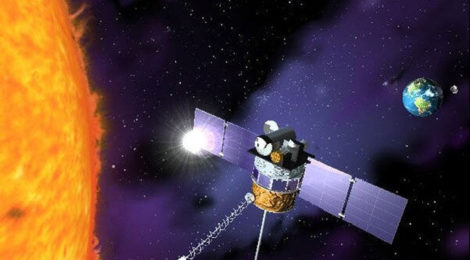
Epic Satellite Earth Video
The EPIC satellite camera began sending photos of the earth back to us in July 2015
Now a time-lapse video shows a year in the life of the Earth as seen from a million miles away.
What’s great about this view of Earth is has the instruments and data to gain a vastly better understanding of how oceans and their plankton produced clouds keep our planet in the Goldilocks Zone.
The Deep Space Climate Observatory, DSCOVR, is orbiting around the sun-Earth first Lagrange point (where the gravitational pull of Earth is equal and opposite of that of the sun). A million miles away is where gravity is at a neutral point in space. This allows DSCOVR, and its EPIC satellite video camera, to essentially hover between the sun and Earth at all times, maintaining a constant view of the sun and sun-lit side of Earth. From there, the satellite provides advanced solar measurements and early warnings of potentially dangerous space/solar weather events, acting like a solar storm buoy in deep space.
Without further ado here’s the vid (scroll on for more ado;)
More ado
Thanks to NASA’s EPIC camera, DSCOVR’s orbit also gives Earth scientists a unique vantage point for studies of the atmosphere and climate by continuously viewing the sunlit side of the planet. EPIC provides global spectral images of Earth and insight into Earth’s energy balance. EPIC’s observations provide a unique angular perspective, and are used in science applications to measure ozone amounts, aerosol amounts, cloud height and phase, vegetation properties, hotspot land properties and UV radiation estimates at Earth’s surface.
Ocean scientists like me are especially eager to begin accessing the new satellite data as it offers this unique always in daylight view. The boffins who designed and built it fortunately included a great set of specifications that will allow practical global ocean health monitoring to be facilitated.
Aqua Satellite
Another similar space/ocean worthy satellite movie just came out a few weeks earlier with that has enabled discovery of critical health issues with phytoplankton in the Indian Ocean. Phytoplankton are without question the most powerful force of nature on their blue world. They dominate nearly all ocean ecosystems, serving as the most basic food source for fish, seabirds, and marine life of all kinds. Phytoplankton account for more than half of all photosynthetic activity on Earth and play a key role in the now out of balance carbon dioxide and oxygen in the atmosphere.
Each year they scrub ~100 billion tonnes of CO2 from the air repurposing that CO2 into new ocean life. They also are the source of the majority of clouds that shade theirs and our planet from the deadly heat of the Sun, without them Earth would be more like the scorching temperature of Venus.
While Indian ocean health is not nearly in as good shape as we might have hoped it’s clear that we have diagnosed Mother Nature’s malady in time to offer her an effective natural tonic to restore her and her ocean pastures to health.
Watch Prof. Michael Behrenfeld’s Video (see more of his vids on YouTube)
Read more everywhere on this blog about how these new satellite global health instruments will allow us to deliver the critical care in time to restore the health and abundance of our oceans immediately. Join me.








